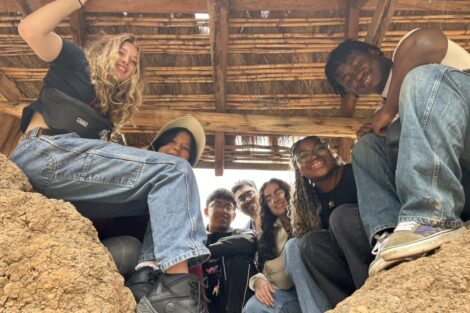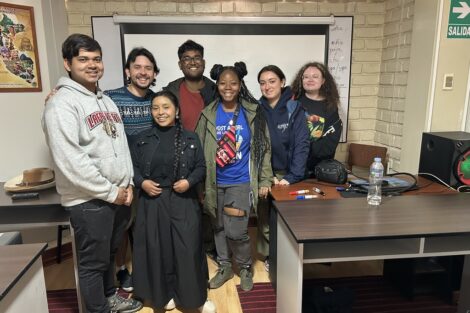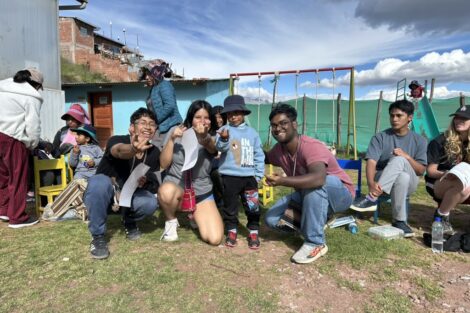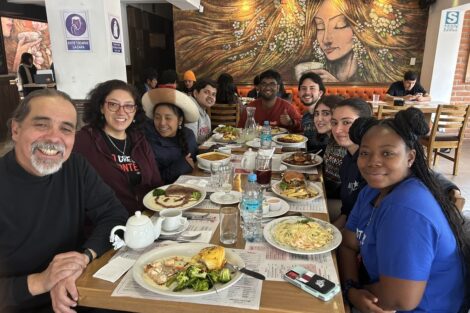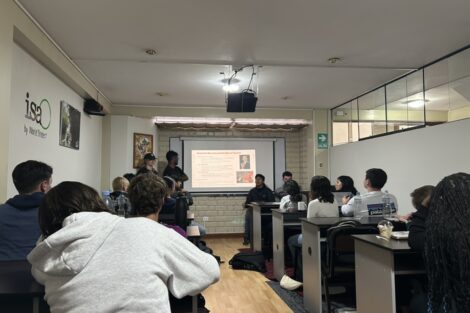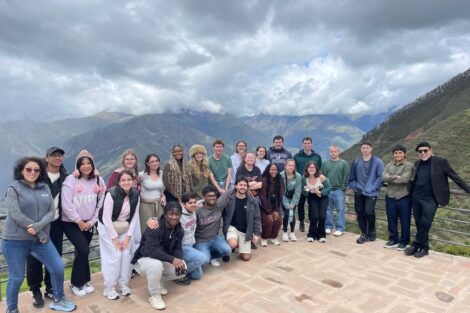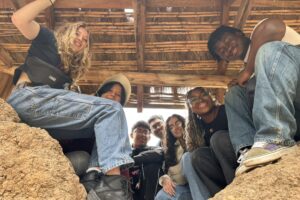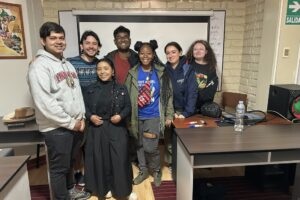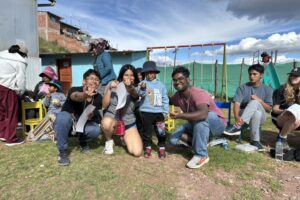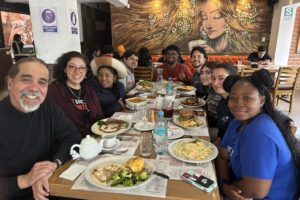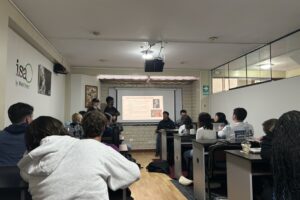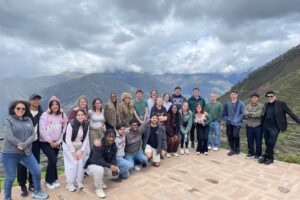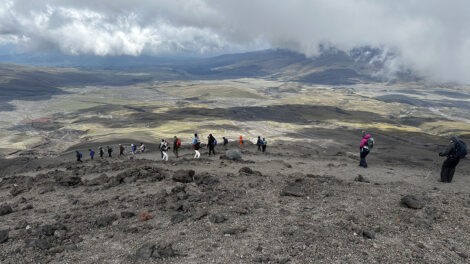Global classrooms: Peru
By Grace Sanborn ’25
Twenty-three students spent the interim in Peru with Jorge Torres, associate professor and department head of music and chair of Latin American and Caribbean studies program, and Carmen Valdivia, assistant professor of languages and literary studies.
The course focused on both the history and present of Peru’s Indigenous population.
“Students explored the manner in which Indigenous peoples in Peru and their traditional ways have both changed and persisted after almost 500 years of colonial and post-colonial existence,” Torres says.
The course involved touring historic sites in the Sacred Valley including Ollantaytambo, Chincero, Pisac, and Machu Picchu. Students also stayed with host families in Cusco and helped to paint classrooms, construct a wall, and build a roof at a local kindergarten.
Katherine Jaimes ’27 says her favorite part of the course was helping at the kindergarten and “feeling like a resident” in Cusco.
Jaimes’ parents are Peruvian, and she says the experience allowed her to explore her roots “hands-on.”
“I have always been so proud of my culture and blood, and this has allowed me to express it through dance, traditions, language, and much more here in the U.S. and at Lafayette,” she says.
Jaimes adds that many tourist-heavy sites are unfamiliar to Peruvian citizens.
“My family (uncles, aunts, grandparents, cousins, and many more) had never had the funds or opportunity to afford such luxury to see Machu Picchu. So this was a great honor and opportunity for me to see what they have never been able to afford to see.”
Valdivia collaborates with Peruvian Indigenous women addressing issues of media representation and self-representation, noting that this “holistic” learning experience allowed students to visit Indigenous communities “outside the usual touristic circuits and gaze, and immerse themselves further in Cusqueño local culture” while staying with their host families. This year, the experience included visits and conversations with two young Quechua women, Danitza Quispe and Soledad Secca, advocating for Indigenous political and cultural rights, especially for women.
